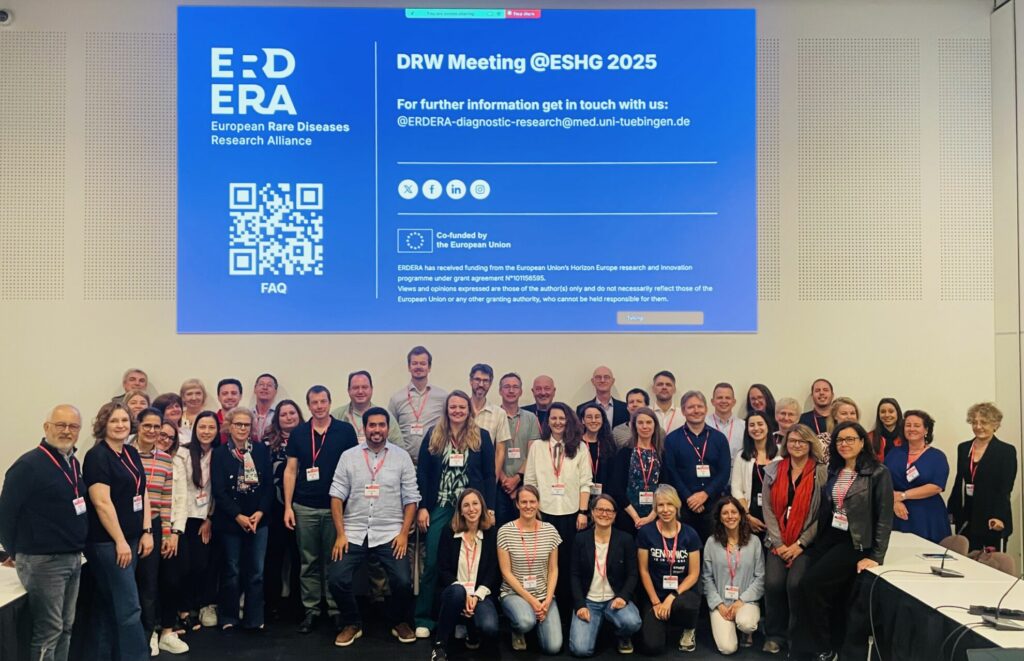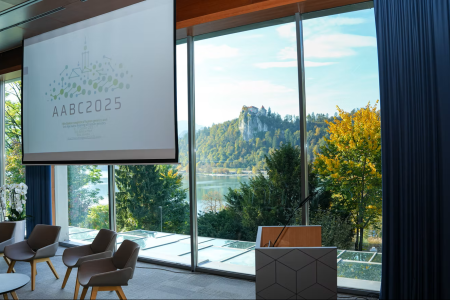The European Human Genetics Conference 2025 (ESHG) provided a significant platform for the ERDERA Diagnostics Research task force to share its strategic vision, scientific progress, and commitment to innovation in the field of rare disease diagnostics.
As one of Europe’s leading events in human genetics, ESHG 2025 brought together researchers, clinicians, and stakeholders working across genomic medicine. For ERDERA, participation in this high-profile conference is crucial—not only to share knowledge and learning and foster collaborations, but also to ensure alignment with cutting-edge developments in the broader genetics and diagnostics landscape. The conference provides the ideal setting to place ERDERA’s work at the heart of European efforts in rare disease research.
Held alongside the main conference, the annual meeting of the ERDERA Diagnostics Research task force brought together over 70 participants both onsite and online. The gathering facilitated productive exchanges, and discussion of emerging priorities and scientific opportunities.
The problem: challenges in diagnosing rare diseases
Rare diseases are inherently elusive. Their rarity means that even geneticists often have limited knowledge about specific conditions. This is compounded by the complexity of our DNA, with millions of variants—many of which are harmless—making it difficult to identify the few that might cause disease. Adding to the challenge is the historical siloing of data: patient information, genetic analyses, and research findings have often been fragmented across different countries and institutions.
A Pan-European big data solution
The Solve-RD project directly addressed these challenges by pooling genomic data from across Europe into a unified resource, transforming how rare diseases are diagnosed. Data from 6,447 unresolved patient cases across 12 European countries and Canada was aggregated, then reanalysed using advanced bioinformatics. This resulted in 506 new diagnoses (8.4%) and 4.1% additional cases through expert reviews, with 15% of findings offering actionable insights—including treatment options in some cases. These breakthroughs demonstrate the value of reevaluating data with cutting-edge tools and cross-border collaboration.
This progress was made possible thanks to European Reference Networks (ERNs), which connected over 300 clinicians, geneticists, and bioinformaticians across Europe and enabled standardized diagnostic protocols.
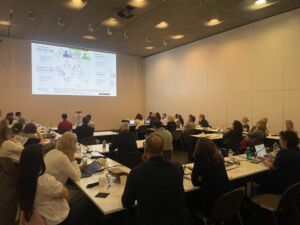
Building on a strong foundation: ERNs and Solve-RD
Holm Graessner (University of Tübingen), leader of ERDERA’s Diagnostics Research programme, together with Lisenka Vissers (Radboud University Medical Centre), heading the genome re-analysis research pipeline within the partnership, outlined at the ESHG Conference the strategic direction of ERDERA which builds upon the legacy of Solve-RD and vests a central role for European Reference Networks (ERNs) in driving collaborative diagnostics research. These networks are instrumental in ensuring the scalability, sustainability and reach of ERDERA’s efforts across Europe.
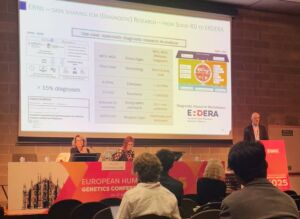
From Solve-RD to ERDERA: scaling the revolution
Building on Solve-RD’s legacy, ERDERA plans to scale this approach to over 100,000 rare disease cases. The initiative integrates advanced technologies—including long-read sequencing, RNA sequencing, and optical genome mapping—to detect complex mutations missed by traditional methods. Standardised data collection and analysis frameworks will allow for equal diagnostic care across all 27 EU countries, even in less-resourced regions.
Collaborative success stories and technological advances
Other sessions at the ESHG Conference featured inspiring presentations from ERDERA partners who had previously been involved in Solve-RD. Gemma Bullich (CNAG) and Vicente Yépez (Technical University of Munich) showcased practical examples of collaborative innovation—demonstrating how tools such as the Genome Phenome Analysis Platform (GPAP) and expert-driven Solvathons are accelerating diagnostic discoveries. These strategies illustrate the power of collective expertise and harmonised data frameworks in identifying previously undetected structural and copy number variants. These successful approaches are set to be further scaled and embedded in ERDERA’s future activities.
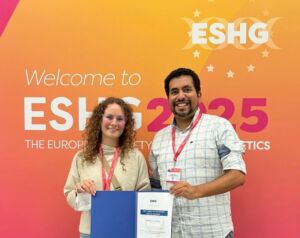
Celebrating excellence: poster prize recognition
A standout moment at ESHG 2025 was the award received by Rebeka Luknárová (TUM, Lab of Julien Gagneur), who was honoured with the Best Poster Award in Clinical Research. Her poster, “Harmonised framework for RNA-seq based rare disease diagnostics in a pan-continental consortium – Solve-RD”, exemplifies how the achievements of Solve-RD are now being actively leveraged by ERDERA’s diagnostic task force. This work reflects the diagnostic potential of RNA sequencing to uncover gene expression abnormalities and splicing defects, especially when whole exome or genome sequencing alone cannot provide answers.
Looking ahead to ESHG 2026 in Gothenburg
Plans are already in motion for ERDERA’s expanded presence at ESHG 2026 in Gothenburg, Sweden. A full-day ERDERA Diagnostics Research working group meeting will take place ahead of the main conference, marking the first major opportunity to share scientific new insights and progress from across the diagnostics group. This event will serve as a milestone in ERDERA’s mission to reshape European healthcare, showcasing its ambition to lead globally in the integration of precision medicine and equitable diagnostics.

